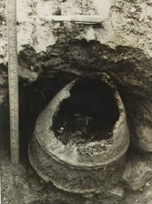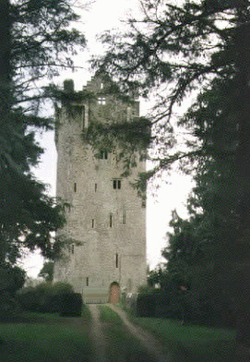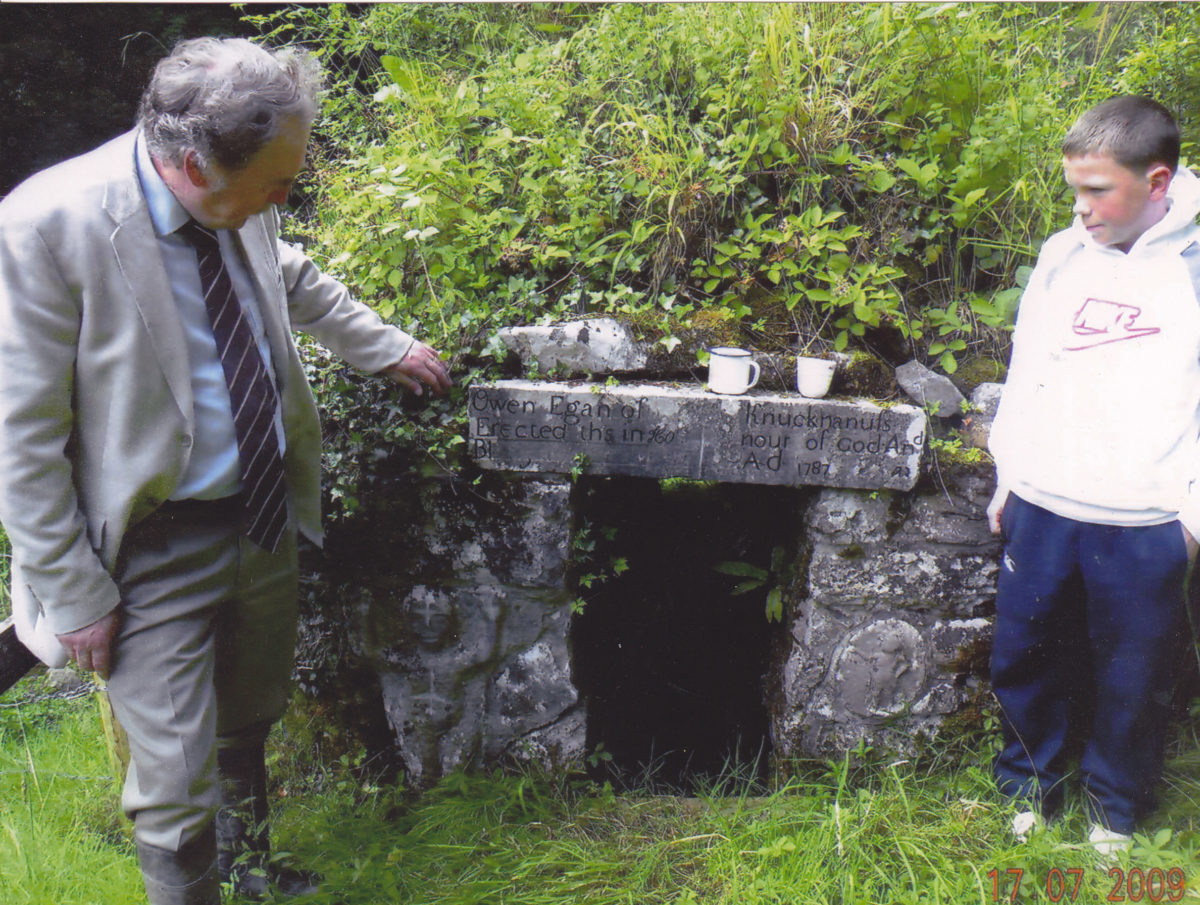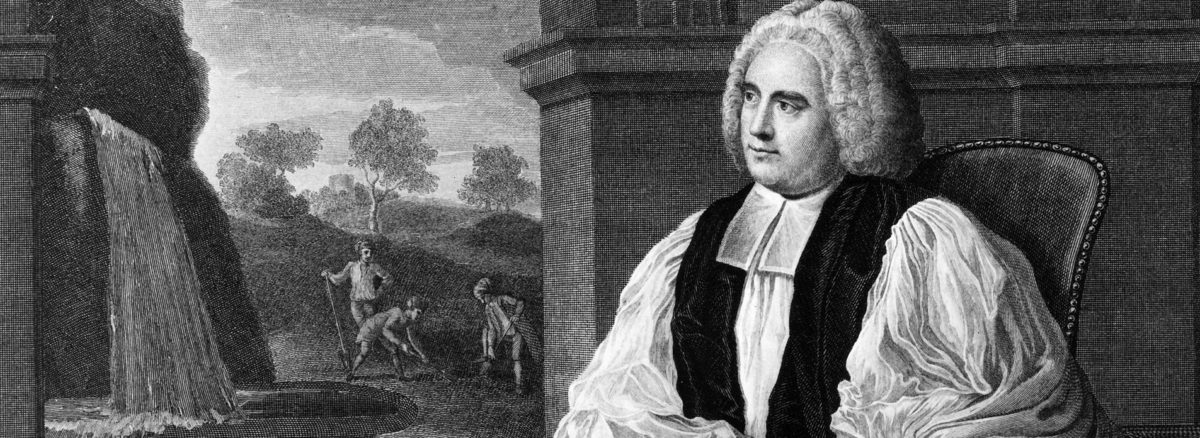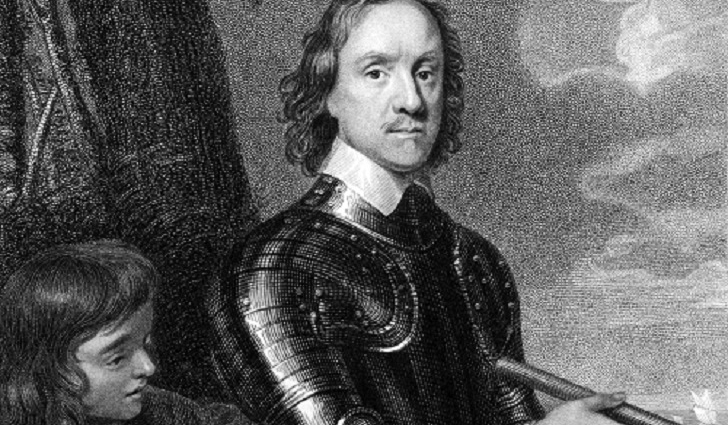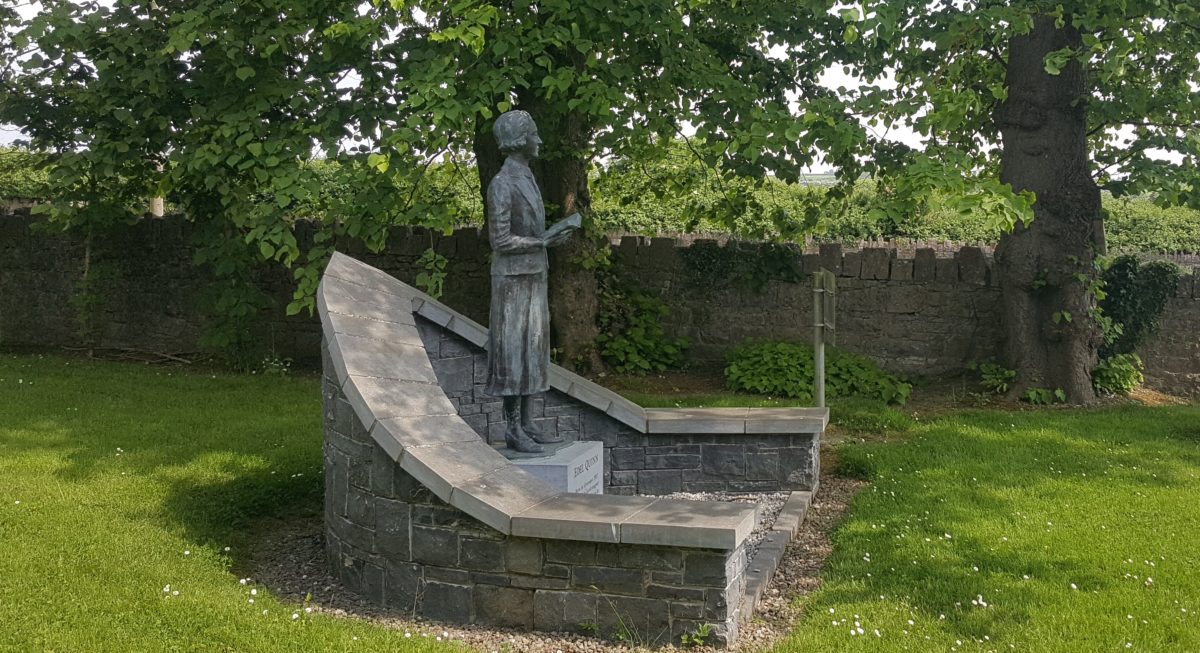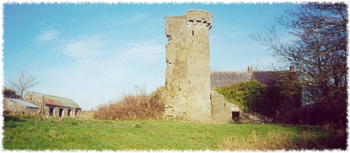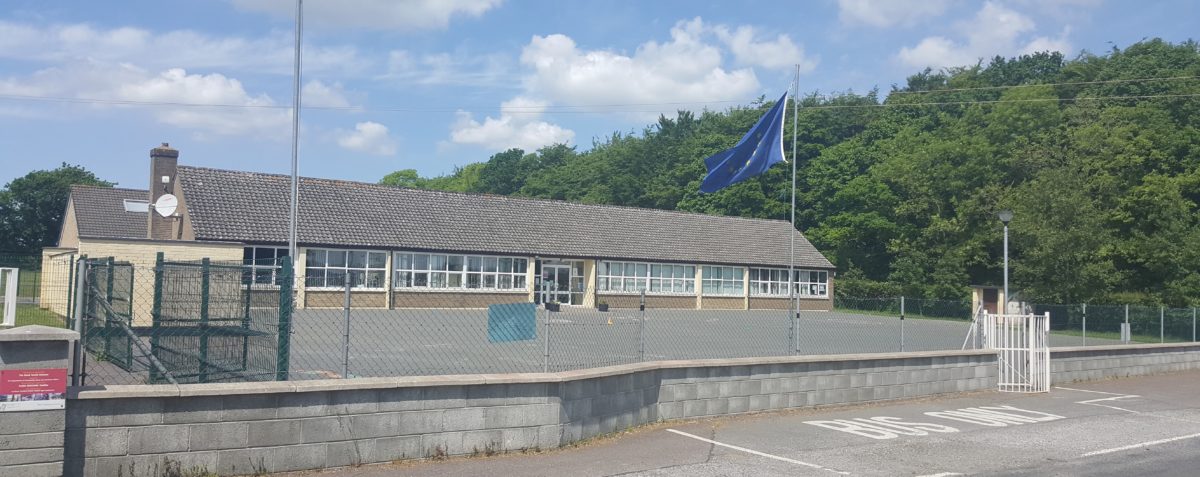Castlemagner has been inhabited by humans for at least the last 4000 years. An urn containing a full male skeleton dating back to 2000BC was dug up in a field between Banagh cross and Kippaugh cross in January 1975. It occured during the course of a land drainage project on the farm of Donal V. Lane. The burial was accidentally discovered during routine drainage work on Mr Lane’s farm, Coolnahane, Castlemagner.
The initial find was by Mr John Foley – Drainage Contractor Kanturk. The site of the grave lies adjacent to a double banked ringed fort now much over grown. This is one of the many ringed forts in the district. It seems clear that there is no connection between the grave and the fort, the position of both being a matter of chance. A few fragments of iron slag from the immediate vicinity of the fort puts it in the early Christian period (350-1200). During the war of 1916-21, digging was done within the fort to construct a safe place to store arms and fuel. In the process, the base of two kilns or furnaces were found. In general, the fort is in a good state of preservation and may well repay excavation.
